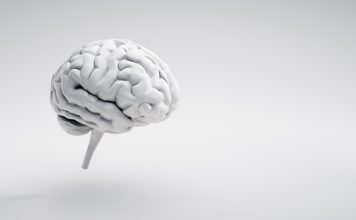Robert Wessells’ lab at Wayne State University has been focusing on the field of functional senescence, particularly age-related decline in mobility and exercise capacity
The capacity of the elderly population to retain mobility is a substantial quality of life issue and an important way of avoiding health complications from inactivity and/or falls.
Therefore, understanding the basic mechanisms of changes in mobile capacity during normal ageing has the potential to make a major contribution to future healthcare initiatives.
In addition, understanding basic mechanisms of exercise tolerance and exercise-induced health benefits has important therapeutic potential for the general population, regardless of age.
In particular, we are interested in developing ways to exploit the brain’s response to chronic exercise therapeutically to generate benefits of exercise for sedentary populations, especially those that are prevented from exercise by disease or disability.
Fruit fly model: Examining genetic responses induced by changes in lifestyle
Since starting my own lab, I have focused on using the fruit fly model to examine the genetic responses induced by changes in lifestyle factors, such as diet and exercise. My lab has developed a novel technique to exercise-train fruit flies on a specially adapted treadmill-like device. Using this unique machine, we are currently engaged in genetic and environmental experiments to identify conserved genetic factors that are required for endurance exercise to protect mobile capacity and cardiac function during aging.
A few years ago, we identified a subset of neurons in the fly brain whose activity is necessary and sufficient to drive exercise adaptations, even in sedentary animals. These neurons are responsible for the release of octopamine, the invertebrate equivalent of norepinephrine.
We have discovered that octopamine secretion during exercise mediates the effect of these neurons on exercise adaptation and identified the required octopamine receptors in the brain, muscle, heart and adipose tissue. Crucially, we found that transient stimulation of neurons that secrete octopamine is completely sufficient to provide metabolic and performance benefits of exercise to sedentary animals.
We have begun the work of translating this work into humans using virtual reality-simulated exercise to stimulate adrenergic activity in a controlled manner in hopes that stimulation of the human brain through sensory input can have the same effects as genetic stimulation in flies to mimic the benefits of exercise.
In parallel, we have also identified multiple key molecules in the fly that are necessary and sufficient to mediate exercise activities in muscles. We identified the mTOR-modulating protein Sestrin as a novel protein mediator of exercise in muscle and, together with collaborators, have shown that its effects are conserved from flies to mice.
Genetic mediators as a treatment for mobility diseases
More recently, we have begun to utilize our exercise paradigm and its genetic mediators as a treatment for diseases that impair mobility.
In collaboration with experts in each disease, we are using the fly model to test the effects of exercise and its downstream effectors on the neurodegenerative disease Spinal Cerebellar Ataxia 2, and we are also actively working on exercise mediators as a potential treatment for the mitochondrial disease Barth Syndrome.
We expect these combined efforts to simultaneously inform our understanding of exercise physiology while also informing our understanding of mechanisms by which exercise maintains healthspan during healthy ageing.













